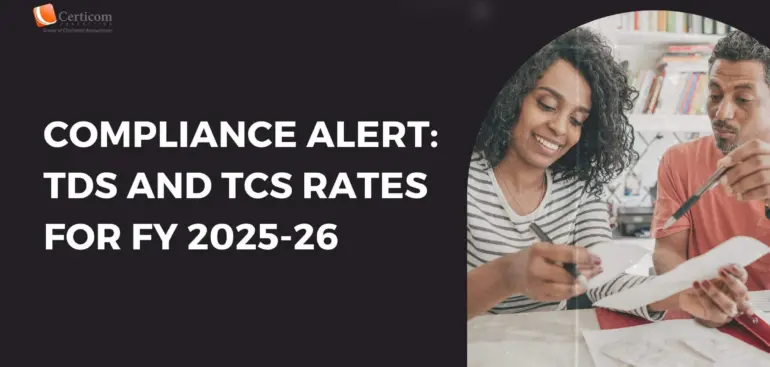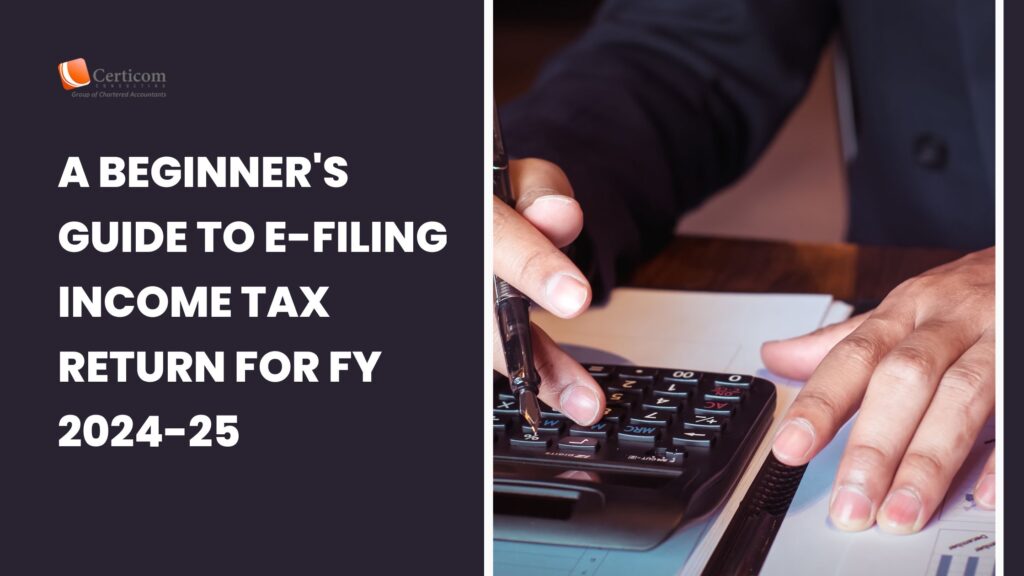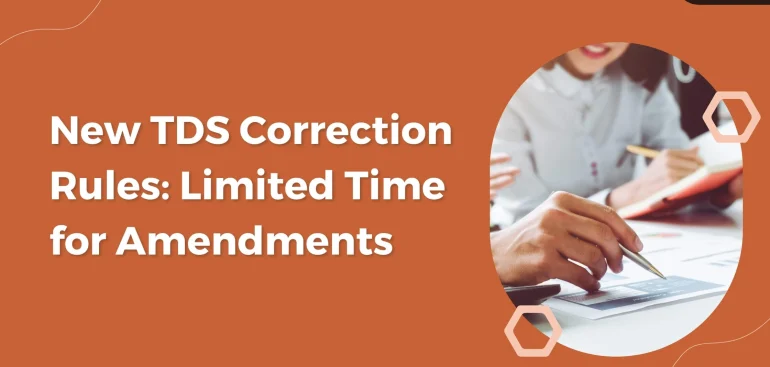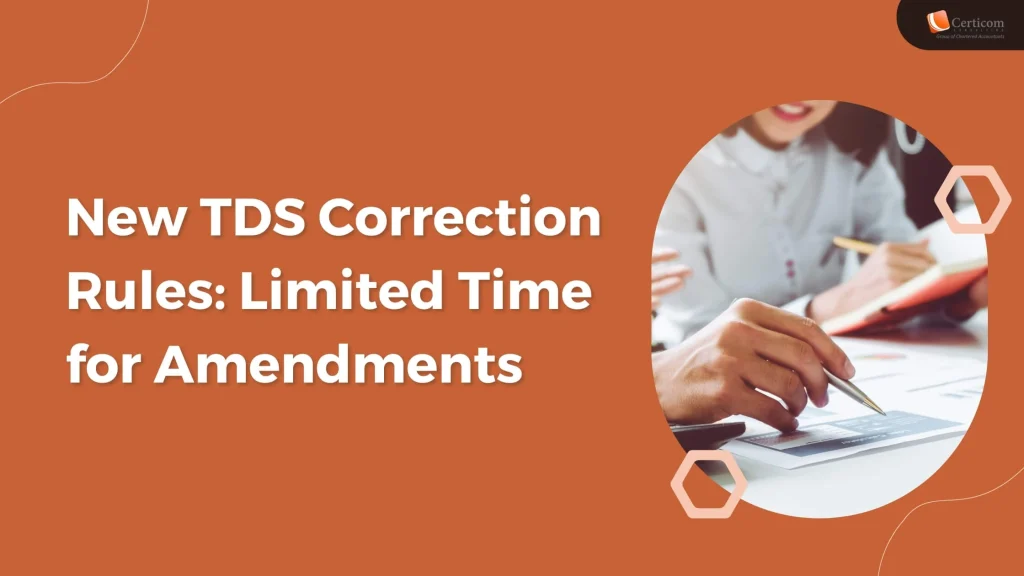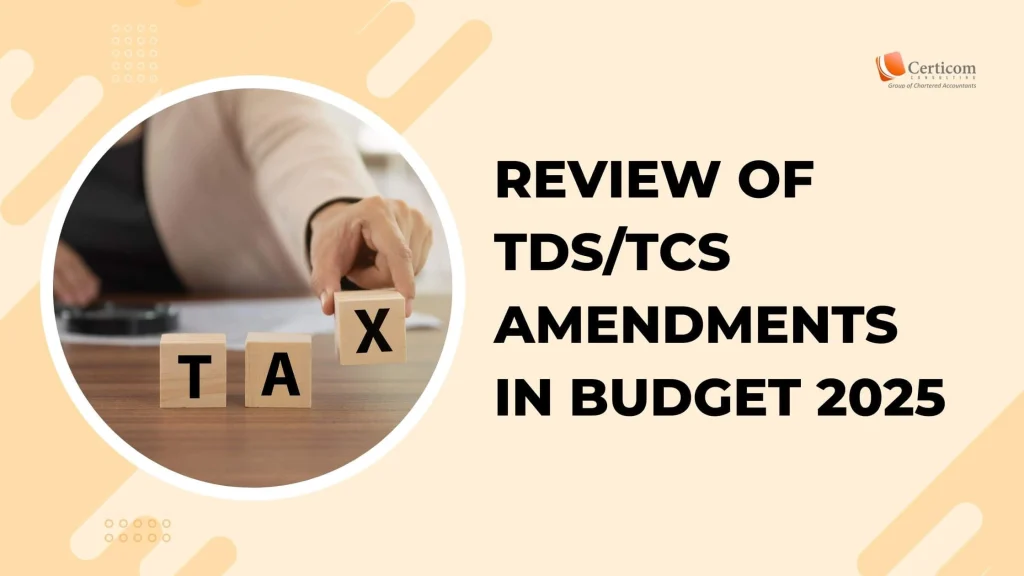Compliance Alert: TDS and TCS Rates for FY 2025-26
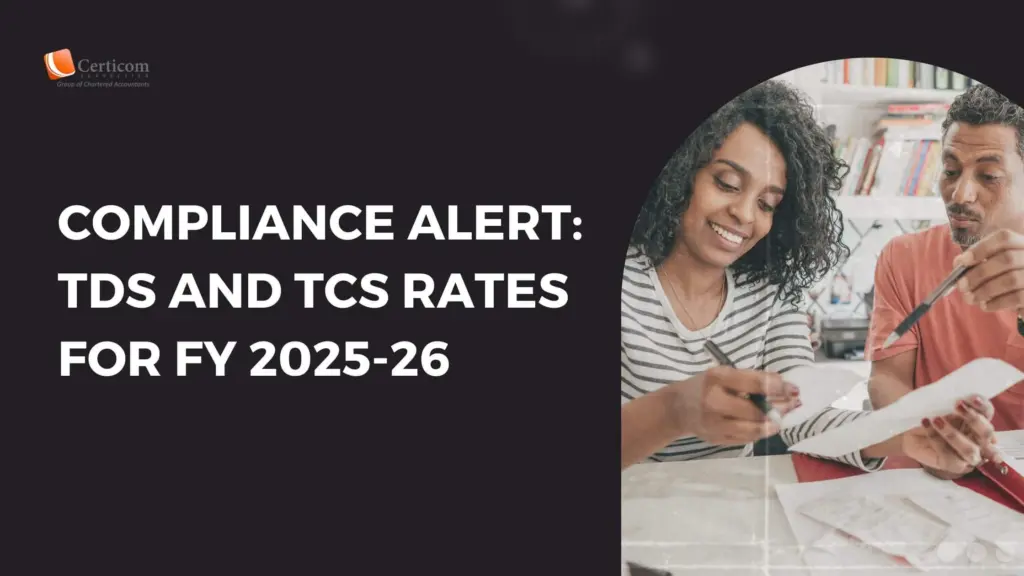
Tax Deducted at Source (TDS) and Tax Collected at Source (TCS) continue to serve as essential mechanisms for ensuring tax compliance and revenue collection at the transaction stage. With the commencement of Financial Year 2025-26, understanding the updated TDS and TCS rates is critical for individuals, businesses, and foreign entities to ensure timely and accurate tax planning.
TDS Rates for Residents – FY 2025-26
TDS is deducted based on the nature of payment, applicable threshold, and the recipient’s status. Here are key sections to note:
1. Salary & Provident Fund
Section 192: Salary – Tax deducted as per income slab rates.
Section 192A: Withdrawal from EPF (above ₹50,000) – 10%.
2. Interest Income
Section 194A:
₹50,000 for non-senior citizens – 10%.
₹1,00,000 for senior citizens – 10%.

3. Dividends and Securities
- Sections 193 & 194: Dividend/Interest from securities – 10% (above ₹10,000).
4. Winnings and Lotteries
Section 194B: Lottery/crossword winnings (above ₹10,000) – 30%.
Section 194BA: Online game winnings – 30%.
Section 194BB: Horse race winnings (above ₹10,000) – 30%.
5. Contractor & Professional Payments
Section 194C:
Individual/HUF contractors – 1%.
Others – 2%.
Section 194J:
Professional fees – 10%.
Technical services/call centers – 2%.
6. Rental Income
Section 194I:
Rent on plant/machinery – 2%.
Other rents – 10%.
7. Other Key Sections
Section 194Q: Purchase of goods exceeding ₹50 lakh – 0.1%.
Section 194R: Business perquisites – 10%.
Section 194S: Virtual Digital Asset transactions – 1%.
Section 194T: (New from April 1, 2025) – Payments to partners – 10%.
Section 194N: Cash withdrawals – 2% to 5% (based on return filing status).
TDS Rates for Non-Residents – FY 2025-26
Non-resident individuals and entities are subject to higher and fixed TDS rates across various payment categories:
1. Salary & Winnings
Section 192: Salary – As per slab.
Sections 194B, 194BA, 194BB: Lottery/game/horse race winnings – 30%.
2. Investment Income
Section 195:
Capital gains – 12.5% or 20%.
Dividend – 10% or 20%.
Interest on loans – 20%.
Royalty & Technical Fees – 20%.
3. Infrastructure-related Interest
Section 194LB: Interest from infrastructure debt funds – 5%.
Section 194LC:
Foreign currency loans – 5%.
Listed bonds in IFSC – 4%.
Others – 9%.
4. Other Key Provisions
Section 196D: Income from securities (FIIs) – 20%.
Section 194T: Partner’s remuneration/interest – 10%.
TCS Rates – FY 2025-26
TCS is applicable when the seller collects tax from the buyer at the point of sale for specific goods or services. Here’s a summary:
1. Common Goods
Alcoholic liquor: 1%
Timber, tendu leaves: 2%–5%
Scrap: 1%
Coal, lignite, iron ore: 1%
2. High-Value Transactions
Motor vehicles (above ₹10 lakh): 1%
Sale of goods exceeding ₹50 lakh (Sec 206C(1H)) – Not applicable where TDS already applies.

3. Overseas Transactions (Section 206C(1G))
Foreign remittance (general): 20%
Education/medical remittance: 5%
Overseas tour package:
Up to ₹10 lakh – 5%
Above ₹10 lakh – 20%
Key Updates for FY 2025-26
Introduction of Section 194T: 10% TDS on partner-related payments by the firm.
Revisions to Section 194N: Enhanced compliance based on prior ITR filings.
Clarifications under Section 195: Refined TDS rates based on income types for non-residents.
Staying updated on the applicable TDS and TCS rates helps taxpayers—residents and non-residents alike—comply with statutory obligations and avoid interest or penalties. The above summary provides a practical reference to navigate tax withholding and collection for FY 2025-26.
For personalized assistance on withholding tax obligations or cross-border transactions, consult a professional tax advisor or reach out to Certicom Group of Chartered Accountants.
Related Post
Have You Reported Your Foreign Assets in Your Income Tax Return?
A Beginner’s Guide to E-Filing Income Tax Return for FY 2024-25
Faking Tax Deductions? You Could Be Penalised Up To 200% Under Income Tax Rules
Book A One To One Consultation Now For FREE
How can we help? *


